As a startup founder, you operate with two constraints: limited time and limited capital. You need results, and you need them fast. The idea of “digital marketing” can feel vast and overwhelming, like shouting into a hurricane and hoping someone hears your revolutionary pitch. However, marketing isn’t magic; it’s a science, and every successful startup follows a structured, repeatable process. Therefore, your first priority must be establishing a clear, phased digital marketing roadmap startups can actually execute.
This comprehensive guide is your authoritative, yet approachable, playbook. We will break down the marketing journey into four distinct phases—Foundation, Validation, Growth, and Scale—each with specific, measurable goals and low-cost, high-impact actions. By sticking to this structure, you’ll stop guessing and start building a predictable, efficient engine for customer acquisition, ensuring every pound and every hour you spend moves you closer to market dominance.
Phase 1: The Foundation (Months 0–3)
The Foundation phase is about establishing your digital home base and proving your market fit. Avoid spending heavily on paid ads here. Your goal is maximum efficiency and clarity.
Goal: Establish the Core Digital Assets and Message
This phase focuses on answering three questions: Who are we? Who is our customer? And where do they hang out?
Essential Action 1: The Optimized Digital Home
Before you market anything, your website must be technically sound, fast, and built for conversion.
Core Website Requirements:
- Speed and Mobile: Your website must load in under 3 seconds and be perfectly responsive on all mobile devices. Google prioritizes speed, and slow sites kill conversions.
- Clear Value Proposition: The headline on your homepage must instantly tell a visitor what you do and who you do it for (e.g., “AI-Powered CRM for UK E-commerce Startups”).
- Conversion Focus: Implement a single, clear Call-to-Action (CTA) above the fold (e.g., “Start Your Free Trial,” “Book a Demo”).
- Analytics Setup: Install Google Analytics 4 (GA4) and the Meta Pixel correctly now. If you don’t track it, you can’t scale it.
Essential Action 2: Foundational Content Strategy (EEAT)
Focus on just three to five pieces of high-quality content that establish your expertise. This is your first step on the digital marketing roadmap startups should follow.
- The Problem/Solution Post: One long-form blog post addressing the single biggest pain point your product solves. (e.g., “Why Traditional Inventory Tracking Fails Small SaaS Companies”).
- The About Us/Founding Story: A piece that conveys your passion and expertise. This builds Trust and Authority (EEAT)—a vital signal for both Google and customers.
- The Cornerstone Landing Page: A detailed service or product page that fully explains the features, benefits, and pricing tiers.
Essential Action 3: Launching Your Google Business Profile (GBP)
If you serve a local or regional audience (even if you’re B2B), your GBP is your most powerful free asset.
- Verification: Claim and fully verify your profile.
- Complete Information: Fill in every field: opening hours, services, product list, and a compelling description.
- Initial Reviews: Gently encourage your first few clients, friends, and family (who have actually used the service) to leave reviews.
For help with the technical setup of your website, from hosting to analytics, a solid digital foundation is key. Visit https://galaxiesoftware.co.uk for resources on website development and technical SEO.
Phase 2: The Validation (Months 3–6)
The Validation phase is about testing your messaging, finding your lowest-cost customer acquisition channel, and achieving Product/Market Fit (PMF).
Goal: Achieve First Profitable Leads and Prove Channel ROI
You are moving from building to testing. Now is the time for small, hyper-focused budget spends.
Essential Action 1: Hyper-Targeted Paid Acquisition (PPC/Social)
Avoid throwing money at broad keywords. Use small, surgical budgets to test specific hypotheses.
- Google Ads (Search): Target long-tail, high-intent keywords that have a low search volume but signal the user is ready to buy (e.g., instead of “Project Management Software,” bid on “affordable PM software for remote teams”). Run ads for one week at $\textsterling 10$ a day, track the Cost-Per-Lead (CPL), and pause immediately if the CPL is too high.
- Facebook/Instagram Ads (Social): Test one specific, visual offer (e.g., a free trial or a high-value guide). Target a highly specific, small audience (e.g., “Owners of UK small businesses who are interested in finance”). Use compelling visuals and strong, clear copy.
The Validation Metric:
Your focus isn’t profit yet; it’s Customer Acquisition Cost (CAC). You must determine, “What is the cheapest way to get a user to sign up or request a demo?”
Essential Action 2: Low-Friction Lead Capture
You need a way to capture leads even if they aren’t ready to buy yet.
- The Lead Magnet: Create one high-value, downloadable asset (e.g., a “Checklist for [Industry Problem],” or a “Free Template”). Offer this in exchange for an email address.
- Email Automation: Set up a simple 3-part welcome sequence:
- Welcome: Deliver the lead magnet.
- Authority: Share your best, most authoritative piece of content.
- CTA: Offer the core product/service with a limited-time incentive.
Essential Action 3: Focus on Social Proof (Reviews & Testimonials)
As you acquire your first paying customers, immediately implement a system to capture feedback.
- The Ask: Ask customers for a Google Review (if local) or a public testimonial (if B2B/SaaS) immediately after the “Moment of Delight”—their first success with your product.
- Deployment: Create a “Testimonials” section on your website and regularly post screenshots of client praise on your social media.
Phase 3: The Growth (Months 6–18)
Once you’ve validated your cheapest acquisition channel and achieved PMF, you move into the Growth phase. This is where you allocate capital to scale the proven channels.
Goal: Scale Proven Channels and Optimize Conversion Funnels
The focus shifts from testing to scaling, supported by data. This is where the digital marketing roadmap startups can follow gets exciting.
Essential Action 1: Deep Conversion Rate Optimisation (CRO)
Your priority is getting more conversions from your existing traffic. This makes your marketing money go further.
- Landing Page A/B Testing: Continuously test different headlines, button colours, image placements, and CTAs on your highest-traffic landing pages. A 1% increase in conversion rate can equate to thousands of pounds in revenue.
- Funnel Mapping: Use GA4 to identify the drop-off points in your conversion funnel (e.g., where do users leave between signing up and making a first purchase?). Fix these leaks first.
- Exit-Intent Pop-ups: Use polite, non-intrusive pop-ups to capture the email of users who are about to leave your site, offering them a last-chance incentive.
Essential Action 2: Content Cluster Expansion
You have the cornerstone content; now you need to build content clusters around it to establish full topical authority, a major Google ranking factor.
- Topic Hub: The cornerstone post (e.g., “Ultimate Guide to B2B Invoicing”) becomes the hub.
- Spoke Content: Create 5–10 shorter blog posts that delve into specific sub-topics and link back to the hub. (e.g., “5 UK Invoicing Regulations SMEs Must Know,” or “Best Free Invoicing Software 2024”).
Essential Action 3: Expand Link Acquisition
Links are the trust votes that Google uses to rank sites. In the Growth phase, you need a systematic, ethical approach to acquiring high-quality backlinks.
- Guest Posting: Identify 3–5 high-authority blogs in your niche and pitch to write expert content for them, securing a link back to your core website.
- Broken Link Building: Find industry resource pages with broken links, recreate the dead content on your site, and politely ask the website owner to swap the broken link for yours.
Phase 4: The Scale (Month 18+)
In the Scale phase, your systems are running, your CAC is known, and your focus is on expansion and diversification of traffic sources.
Goal: Diversify Traffic and Increase Customer Lifetime Value (CLV)
You know how to acquire customers; now you need to keep them and find them in new places.
Essential Action 1: Channel Diversification
Relying on just one traffic source (e.g., Facebook Ads) is risky. Begin testing new, proven channels.
- LinkedIn/B2B Ads: If you are B2B, scale your LinkedIn advertising beyond basic targeting to include specific job titles and company sizes.
- Video Marketing (YouTube): Create a dedicated YouTube channel for tutorials, deep-dive product features, and thought leadership. YouTube has a long shelf-life and can become a high-converting evergreen channel.
- Affiliate/Partner Marketing: Set up a system where complementary businesses or industry influencers earn a commission for every sale they drive to you.
Essential Action 2: Maximize Customer Lifetime Value (CLV)
Acquisition is expensive. Retaining and upselling existing customers is cheaper.
- Retention Email Marketing: Use your email list to provide exclusive high-value content, feature new products, and offer loyalty discounts.
- Referral Programs: Create a formalized, tracked system that rewards existing customers for referring new, high-value leads. This is one of the cheapest forms of scalable marketing.
Essential Action 3: Advanced Automation and Tool Integration
As you scale, you must automate repetitive tasks to free up your team for strategic work.
- CRM Integration: Ensure your CRM (Customer Relationship Management) system is fully integrated with your marketing tools (Email, Ads, Website Forms).
- AI for Content Management: Use AI tools not just for drafting, but for complex tasks like summarizing quarterly performance reports, identifying new keyword opportunities, or translating content for international expansion. For further reading on the opportunities and risks of utilizing AI in your strategy, review the AI affecting Google rankings topic.
Conclusion: Following the Roadmap to Predictable Growth
A successful digital marketing roadmap startups can follow isn’t about complexity; it’s about sequence and discipline.
Start with the Foundation by perfecting your digital home and analytics. Move to Validation by spending small budgets to find your cheapest customer acquisition channel (your CAC). Then, enter the Growth phase, scaling that proven channel and tirelessly optimising your conversion rate. Finally, Scale by diversifying traffic and maximizing the value of every customer.
By adhering to these four distinct phases, you replace guesswork with data, manage your limited capital efficiently, and build a predictable, repeatable system that drives the success of your startup.
Which of the four phases are you currently focusing on, and what is your biggest bottleneck right now?

